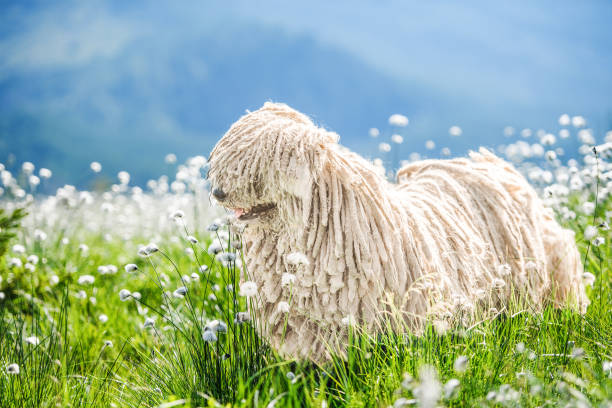Puli

Breed History:
The Puli is an ancient Hungarian herding breed with roots tracing back over 1,000 years. It likely descended from herding dogs brought to the Carpathian Basin by the Magyars, possibly influenced by Tibetan-type herding dogs along the way. By the Middle Ages, the Puli had become firmly established as a sheepdog in rural Hungary, prized for its agility, intelligence, and weather-resistant coat.
It was traditionally used to herd and guard livestock, particularly sheep, often working alongside larger guardian breeds like the Komondor. Though nearly extinct after World War II, the Puli was revived through dedicated breeding efforts and is now recognised by major kennel clubs worldwide.
|
Gender |
Height |
Weight |
|
Male |
39-45 cm |
13-15 kg |
|
Female |
36-42 kg |
10-13 kg |
Size: Medium
Life Expectancy: 12–16 years

Breed Appearance:
The Puli is instantly recognisable for its long, corded coat, which forms natural dreadlocks over time. The coat serves as insulation and protection in all weather. It comes in black (most common), white, grey, and various shades of fawn or apricot.
Underneath its thick coat, the Puli has a square, compact build, a high-set tail curled over the back, and a lively, alert expression. Despite the heavy coat, it is light-footed and agile.
Breed Type – Herding Dog:
The Puli is an extremely active, vocal, and intelligent herder. It has a strong instinct to control movement and is known for tight, rapid turns and a bouncing gait when herding.
Loyal and attentive to its family, the Puli also makes a good watchdog, often being wary of strangers and protective of its people.

Training:
Pulis are highly intelligent and eager to work, but can also be stubborn and independent thinkers. Consistent, positive training and early socialisation are essential to harness their potential.
They respond best to reward-based methods and benefit from short, engaging sessions. Their quick minds make them excellent in agility, obedience, and herding trials.
Health & Care:
The breed is generally healthy, though it may be prone to:
-
Hip dysplasia
-
Progressive retinal atrophy (PRA)
-
Cataracts
-
Patellar luxation
-
Deafness (rare)
Regular veterinary care, joint support in older dogs, and health screenings through reputable breeders are important for prevention.

Living Conditions:
The Puli is adaptable but thrives best in homes where it can be active and involved. It can live in both urban and rural settings, provided it gets ample mental and physical stimulation.
This breed may become vocal or bored if left alone too long or under-stimulated. It’s well-suited for active individuals or families, but not ideal for homes with limited time or space.
Exercise:
Pulis needs daily physical and mental activity. This can include:
-
Long walks, hikes, or off-leash play in safe areas
-
Dog sports like agility, herding trials, or obedience
-
Puzzle toys and training tasks to keep their mind sharp
They are happiest when working or learning something new.
Grooming:
Unique coat care needs:
-
The corded coat forms naturally, but requires manual separation of cords as they form (typically starting around 9–12 months of age)
-
Bathing is infrequent, but drying can take hours
-
Dirt is easily shed once the cords are mature
-
Regular ear, eye, nail, and dental care is still required
Though striking, the coat is labour-intensive, and some owners choose to trim it short for manageability.

Advantages:
-
Unique and iconic corded coat
-
Loyal, alert, and devoted to family
-
Highly intelligent and trainable
-
Agile and athletic—great for dog sports
-
Hardy and weather-resistant
-
Good watchdog with strong protective instincts
Disadvantages:
-
A corded coat requires significant grooming time
-
Can be stubborn or independent in training
-
High energy—needs daily physical and mental stimulation
-
May bark excessively if bored or anxious
-
Not ideal for homes without time to train or exercise
-
May be wary or aloof with strangers

